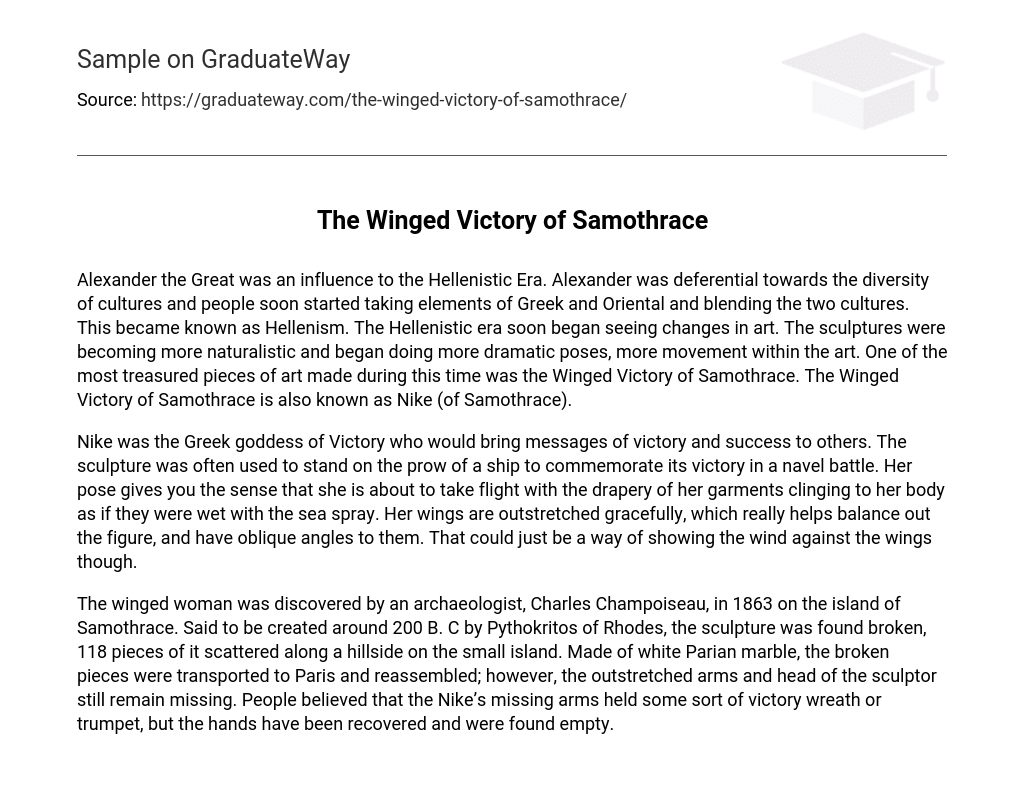Alexander the Great was an influence to the Hellenistic Era. Alexander was deferential towards the diversity of cultures and people soon started taking elements of Greek and Oriental and blending the two cultures. This became known as Hellenism. The Hellenistic era soon began seeing changes in art. The sculptures were becoming more naturalistic and began doing more dramatic poses, more movement within the art. One of the most treasured pieces of art made during this time was the Winged Victory of Samothrace. The Winged Victory of Samothrace is also known as Nike (of Samothrace).
Nike was the Greek goddess of Victory who would bring messages of victory and success to others. The sculpture was often used to stand on the prow of a ship to commemorate its victory in a navel battle. Her pose gives you the sense that she is about to take flight with the drapery of her garments clinging to her body as if they were wet with the sea spray. Her wings are outstretched gracefully, which really helps balance out the figure, and have oblique angles to them. That could just be a way of showing the wind against the wings though.
The winged woman was discovered by an archaeologist, Charles Champoiseau, in 1863 on the island of Samothrace. Said to be created around 200 B. C by Pythokritos of Rhodes, the sculpture was found broken, 118 pieces of it scattered along a hillside on the small island. Made of white Parian marble, the broken pieces were transported to Paris and reassembled; however, the outstretched arms and head of the sculptor still remain missing. People believed that the Nike’s missing arms held some sort of victory wreath or trumpet, but the hands have been recovered and were found empty.





